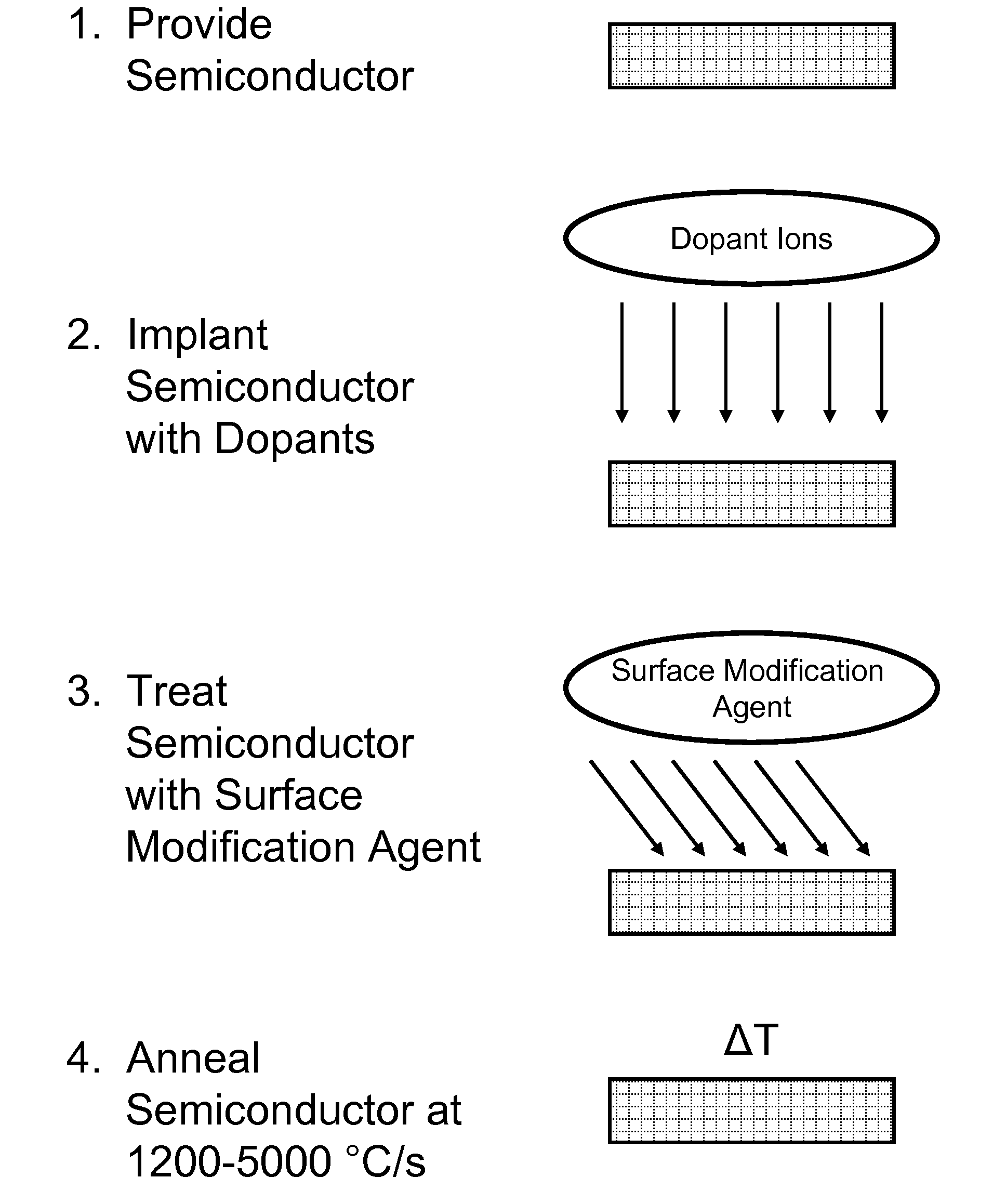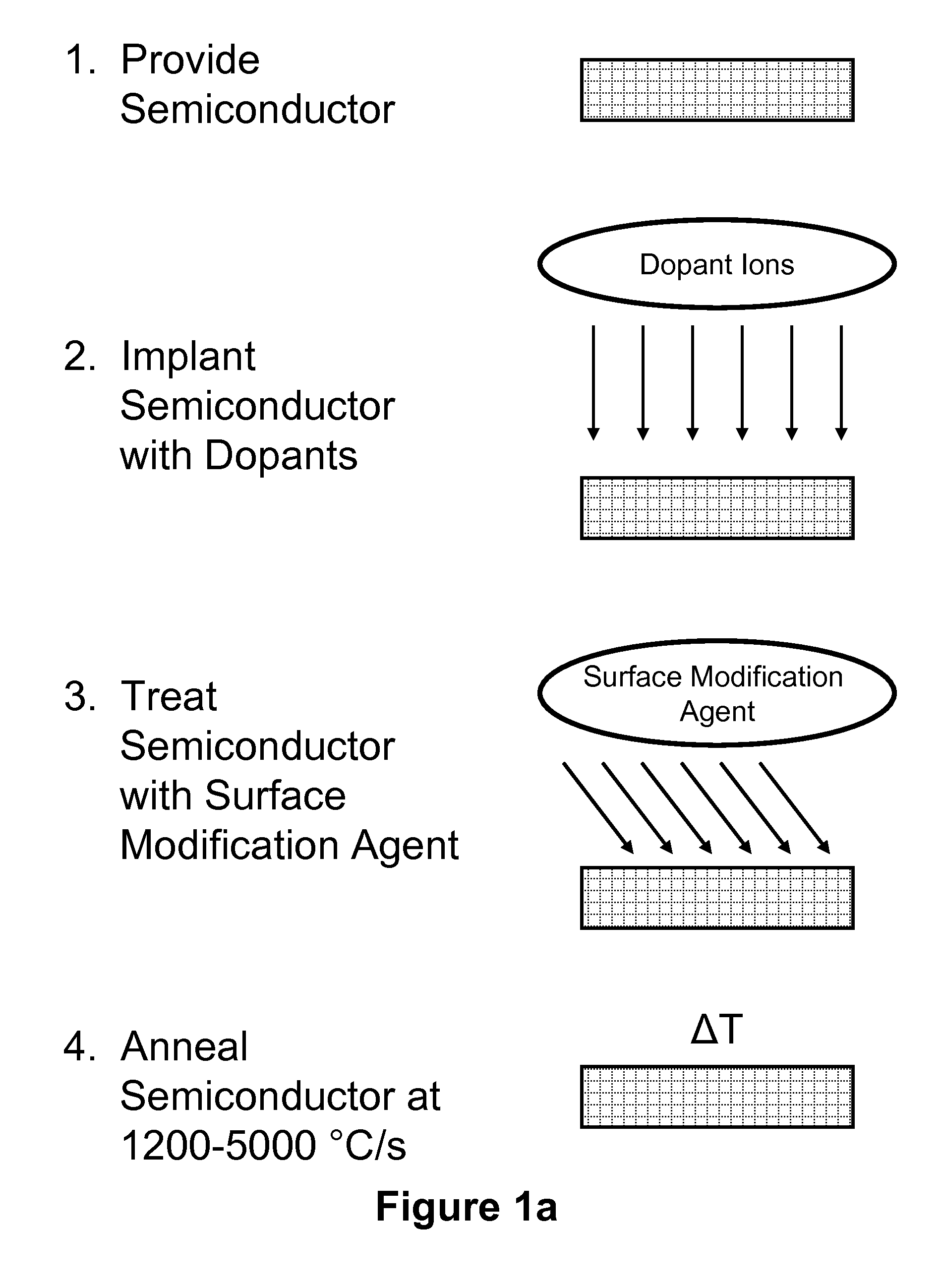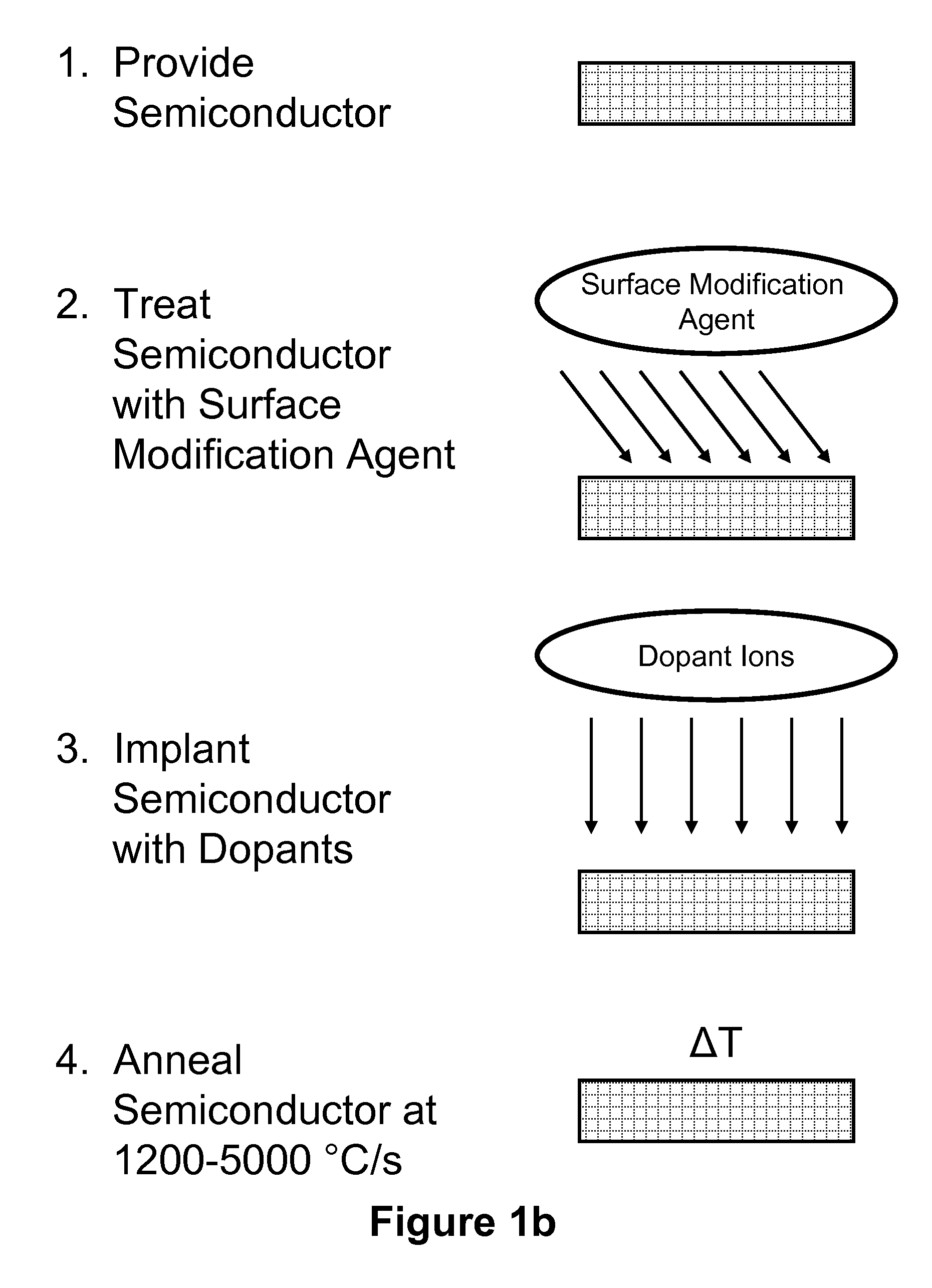Preparation of ultra-shallow semiconductor junctions using intermediate temperature ramp rates and solid interfaces for defect engineering
a semiconductor junction and intermediate temperature ramp technology, applied in semiconductor/solid-state device manufacturing, basic electric elements, electric apparatus, etc., can solve the problems of reducing the physical dimension of the dopant-containing layer, impede the feature size and spacing requirements of electrical components in dense integrated electrical circuits, and no known manufacturing solution to meet the requirements of rapidly evolving device requirements
- Summary
- Abstract
- Description
- Claims
- Application Information
AI Technical Summary
Benefits of technology
Problems solved by technology
Method used
Image
Examples
example 1
Optimized Temperature Ramp Rates
[0068]Background. In “soak” annealing, a semiconductor wafer is held at constant temperature for several minutes. It is sometimes used for “solid phase epitaxial regrowth” (SPER), in which a doped layer of amorphous silicon is grown and then heated with the huge crystalline seed layer underneath to guide the crystal formation of the doped layer. Much research has gone into SPER, though it does not appear to be the method the semiconductor industry is moving toward.
[0069]In “spike” annealing, the temperature is ramped by incandescent light heating (after a temperature stabilization step of several tens of seconds at 600-800° C.) at 25-400° C. / second up to typically about 1050° C. The dwell time near the top of the spike is 0.5-1 second, and is governed by the time it takes for lamps to cool down after power is cut.
[0070]There are two kinds of millisecond heating methods that the industry is moving toward. One is “flash” annealing, wherein the wafer is ...
example 2
Use of Solid Interfaces for Defect Engineering
[0096]Introduction. A substantial difference in diffusion profiles of arsenic implanted into silicon is observed when soak annealing is performed in the presence of a silicon dioxide overlayer grown at 630° C. vs. a native oxide grown at room temperature by simple exposure to air. Substantial differences in arsenic activation as measured by sheet resistance are also observed. Similar effects are observed for the fraction of arsenic dose retained.
[0097]In these cases, the oxide was formed before annealing took place. It is also possible to form or grow the oxide during the annealing step employed for activating the dopant. Varying the ambient gas pressure of oxygen results in significantly different degrees of boron diffusion, dose loss and fractional activation. In all cases, the results involved soak annealing and low pressures of oxygen: below 10−6 Torr. These low pressures would be difficult, though not impossible (with effort) to ach...
example 3
Simulation Results
[0112]Simulations conducted illustrate that flash annealing is an improvement over spike. As shown in Table 4, a 20 times increase in Si interstitial concentration (from 4×1014 to 9×1015 cm−3) is more than counterbalanced by the factor of 1000 decrease in time the profiles are exposed to these concentrations, resulting in an improvement in junction depth. FIGS. 5A and 5B show several examples of results distilled from the simulations according to the criteria shown above in Example 1.
[0113]
TABLE 4Spike (1050° C.)Flash (1322° C.)[Sii] (cm−3)4 × 10149 × 1015tmax (S)0.66 × 10−4xlattice (nm)22.74.8x (expt) (nm)21.54.7
[0114]FIGS. 9A and 9B illustrate two mechanisms by which boron is immobilized. In the first mechanism, FIG. 9A, a boron interstitial 901 is immobilized by kick-in into the semiconductor 902 lattice. In the second mechanism, FIG. 9B, a boron interstitial 903 is accreted into a boron 904 and semiconductor 905 cluster. FIG. 7 shows a cartoon representation of...
PUM
| Property | Measurement | Unit |
|---|---|---|
| temperature | aaaaa | aaaaa |
| temperature | aaaaa | aaaaa |
| temperature | aaaaa | aaaaa |
Abstract
Description
Claims
Application Information
 Login to View More
Login to View More - R&D
- Intellectual Property
- Life Sciences
- Materials
- Tech Scout
- Unparalleled Data Quality
- Higher Quality Content
- 60% Fewer Hallucinations
Browse by: Latest US Patents, China's latest patents, Technical Efficacy Thesaurus, Application Domain, Technology Topic, Popular Technical Reports.
© 2025 PatSnap. All rights reserved.Legal|Privacy policy|Modern Slavery Act Transparency Statement|Sitemap|About US| Contact US: help@patsnap.com



